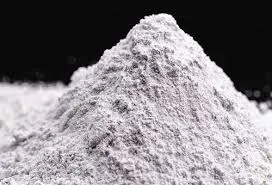
aŭg . 13, 2024 23:21 Back to list
Understanding HPMC HS Code for Effective Import and Export of Hydroxypropyl Methylcellulose Products
Understanding HPMC and Its HS Code
Hydroxypropyl Methylcellulose (HPMC) is a versatile, non-ionic cellulose ether widely used across various industries, including pharmaceuticals, food, construction, and personal care. Its unique properties, such as film-forming ability, thickening, emulsifying, and water-retaining capabilities, make it an essential ingredient in numerous applications. Given its significance, an understanding of its Harmonized System (HS) code is crucial for trade and export purposes.
What is HPMC?
HPMC is derived from cellulose, a natural polymer made from plant materials. Through modification, HPMC acquires properties that are beneficial for multiple applications. In the pharmaceutical industry, for example, it is often used as a binder, film former, and controlled-release agent in drug formulations. Its ability to dissolve in warm water and gel once cooled adds to its attractiveness as an excipient in tablet manufacturing.
In the food industry, HPMC serves as a thickening agent and stabilizer in various products, including sauces, dressings, and low-fat food items, providing texture without adding calories. The construction industry utilizes HPMC as an additive in cement and mortar to improve workability and extend the open time of mortars.
The Importance of HS Codes
The Harmonized System (HS) is an international nomenclature for the classification of products. The HS Code is a six-digit numerical code that categorizes products for trade purposes. Countries around the world use these codes to determine tariffs, export/import regulations, and for statistical purposes. Understanding the HS code associated with HPMC is essential for companies engaged in international trade, as it can affect pricing, regulatory compliance, and eligibility for trade incentives.
hpmc hs code

HPMC’s HS Code
The HS code for Hydroxypropyl Methylcellulose falls under the broader category of polysaccharides and derivatives. Generally, HPMC is classified under HS Code 3912, which pertains specifically to “Cellulosic and cellulose derivatives.” However, the precise classification may vary slightly depending on regional interpretations and additional modifications of the substance. It is crucial for manufacturers and exporters to consult local customs authorities or trade experts to ensure compliance with the correct HS code and avoid potential issues during the shipping process.
Applications and Trade Implications
The application of HPMC across various industries amplifies its trade importance. For countries that produce HPMC, accurate classification under the HS code helps in facilitating trade agreements and understanding market dynamics. Additionally, for importers, getting the classification right is vital to ensure compliance with regulations, determining duties, and facilitating smooth customs clearance.
Furthermore, as the global market increasingly moves towards sustainable and bio-based products, HPMC’s natural origin and non-toxic nature position it favorably among consumers and manufacturers alike. Countries looking to promote natural ingredients may find opportunities to export not only HPMC but also products that highlight its use.
Conclusion
Hydroxypropyl Methylcellulose is a highly functional chemical that plays a significant role in various industries. Understanding its HS code is crucial for effective international trade and compliance with regulations. As the market continues to evolve, the importance of HPMC is expected to grow, opening doors for new applications and global trade opportunities. Companies engaging with HPMC must stay informed about its classification, properties, and market trends to navigate the complexities of international trade successfully.
-
Versatile Hpmc Uses in Different Industries
NewsJun.19,2025
-
Redispersible Powder's Role in Enhancing Durability of Construction Products
NewsJun.19,2025
-
Hydroxyethyl Cellulose Applications Driving Green Industrial Processes
NewsJun.19,2025
-
Exploring Different Redispersible Polymer Powder
NewsJun.19,2025
-
Choosing the Right Mortar Bonding Agent
NewsJun.19,2025
-
Applications and Significance of China Hpmc in Modern Industries
NewsJun.19,2025







